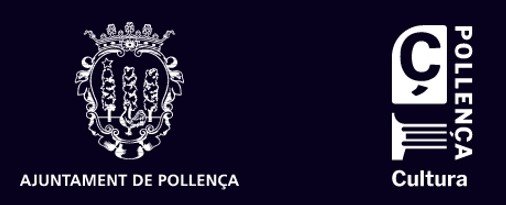Presentation
The Festival core remains firmly and resolutely through each edition as an essential part of what substantiates this 63rd edition, taking place throughout August 2024.
This edition’s programme aims to bring out and highlight one of the Festival’s evolutionary features, none other than offering a complete and consistent lineup that adheres to the Festival’s distinctive principles right from its inception.
The Pollença Festival 2024 edition provides a global journey of a big part of the history of music, from Claudio Monteverdi (Le Consort) to 20th-century authors. Starting from the Renaissance and the Baroque through the contemporary, music is brought before the audience on a historical itinerary across its history. Over this itinerary, we will stop to commemorate the 175th Chopin’s death anniversary. We give you the various formats the history of music has produced: From the baroque ensemble (Le Consort), covering the classical ensemble (Mozart’s concerts and symphony with the Freiburg Orchestra) to the romanticism and post-romanticism most powerful symphonism (the Luxembourg Philharmonic and the Valencia Palau de les Arts Orchestra with Brahms, Sibelius, Saint Saens, etc.). Going ahead with the itinerary designed every third edition, we find the chamber ensemble: From the 2023 edition’s singing recital and string quartet to the piano solo recital appearance, and particularly, the trio ensemble with the VibrArt Trio. Special note is the historical evolution of the keyboard instruments: Harpsichord, pianoforte and piano. Indeed, the harpsichord is exhibited with this instrument’s transcriptions from Vivaldi’s concerts (Le Consort), the fortepiano with two Mozart concerts by Kris Bezuidenhout, and the piano in recital (Yuja Wang) and concert formats (Bruce Liu).
Lastly, we must not fail to highlight the Festival’s international side over a lineup of soloists – top representatives of their fields holding a renowned career, with very different backgrounds in keeping with internationality, including violinist Sergey Khachatryan (Armenia), pianist Yuja Wang (China, the USA), pianist Bruce Liu (Canada), also pianist Kristian Bezuidenhout (the UK), James Gaffigan (the USA), Gustavo Gimeno (Spain), Le Consort (France), FBO (Germany), Trio VibrArt (Spain), Luxembourg Philharmonic (Luxembourg), Palau de les Arts Orchestra (Valencia region). This year, music becomes accessible to anyone interested through a family-friendly concert by Cello Republic, suitable for the entire household to listen together.
Once again, the Pollença Festival’s character and uniqueness make it stand as a window through which the dazzling light of great artists shines. The event represents a cultural beacon, reflecting light across Europe through musical works performed by the most prestigious ensembles and soloists. This light invites you to appreciate the beauty of Pollença and Mallorca landscapes from a different perspective while staying on track with the music.
Overall, we work to ensure that the Pollença Festival remains a “fire that enlightens a heritage capable of strengthening our identity,” as a wise man said.
Pere Bonet i Bonet
Programming and artistic designing
The Festival team
The Festival, attached to the Department of Culture of the City Council, is managed by the technical services of the City Council of Pollença. From 2020, the Festival has Mr. Pere Bonet Bonet in the tasks of programming and artistic direction and design and as Coordinator of the Festival’s Advisory Committee, from 2024. His task is manifested, as a technical expert, both in the artistic perspective and in the organizational and logistical structures.
This year, the Advisory Commission is recovered with the aim of sharing, discussing and evaluating the programming and annual editions. The commission is made up of four experts with a musical background and knowledge and trajectories that support their appointment, including Ms. Mònica Marí, Ms. Isabel Fèlix, Mr. Joan Company and Mr. Joan Campomar.
The Cloister
Between the 16th and 17th centuries the Dominicans erected this emblematic building, in the cloister of which one of the main classical music meetings in the world is held every year.
This building was erected by the Dominican friars (1) between 1558 and 1616 with the aim of consolidating their presence in Pollença, since they initially settled in the Oratori del Roser Vell. The Dominicans occupied the church and the convent until 1833, when the complex was disentailed (2), and a few years later the State ceded it to the Ajuntament de Pollença. Since then it has been put to numerous uses, from hospice-residence to Civil Guard barracks, school, library and museum.
The church of the convent has a basilica floor plan (3) and ten side chapels, each adorned with an altarpiece from the period of its construction. The most striking example is the one at the head of the church, which was made between 1651 and 1662 by Majorcan sculptor Joan Antoni Oms and is dedicated to the Mare de Déu del Roser, patron saint of the Dominicans. The painting dates back to the fifteenth century and comes from the Oratori del Roser Vell.
Next to the church is the pièce de résistance of this building: a Baroque-style (4) cloister which was completed in 1616. Well known for the beauty of its four arched corridors, it has also been the venue for the Pollença Classical Music Festival since 1962. The best orchestras, choirs and opera singers of the world participate in this annual event, which takes place during the summer, enjoying not only the beautiful scenery but also the excellent acoustics provided by this cloister.
(1) Dominican Friars: The Order of Preachers, also known as the Dominican Order, is a Catholic religious order founded by Spanish priest Domingo de Guzmán in 1216. Its members, the Dominican Friars, advocate a life of preaching peace to the people, having taken vows of poverty, austerity, chastity and obedience. Famed Dominicans from throughout history include Tomás de Aquino, San Vicente Ferrer and Bartolomé de las Casas.
(2) State Expropriation: Throughout the nineteenth century, Spanish liberal governments carried out a process of expropriating, nationalising and privatising many of the properties that the Catholic Church had amassed across the country. The aim of this was to boost public coffers, which were suffering heavily due to wars and the loss of colonies.
(3) Basilica floor plan: A type of architectural floor plan that dates back to Roman public buildings. It consists of a main nave separated from other lower naves by rows of columns, allowing churchgoers to focus on the chevet of the church, which is usually an apse where the high altar is found.
(4) Baroque-style: A term identified with a cultural movement and artistic style dating approximately from the seventeenth to mid-eighteenth century, characterised by excessive ornamentation. In fact, the concept was coined by its critics using the French word ‘baroque’, one translation of which is ‘extravagant’, referring to what they considered was an excess on the part of certain artists.
SPONSORS

FINANCED BY


WITH THE SUPPORT OF

OFFICIAL MEDIA

